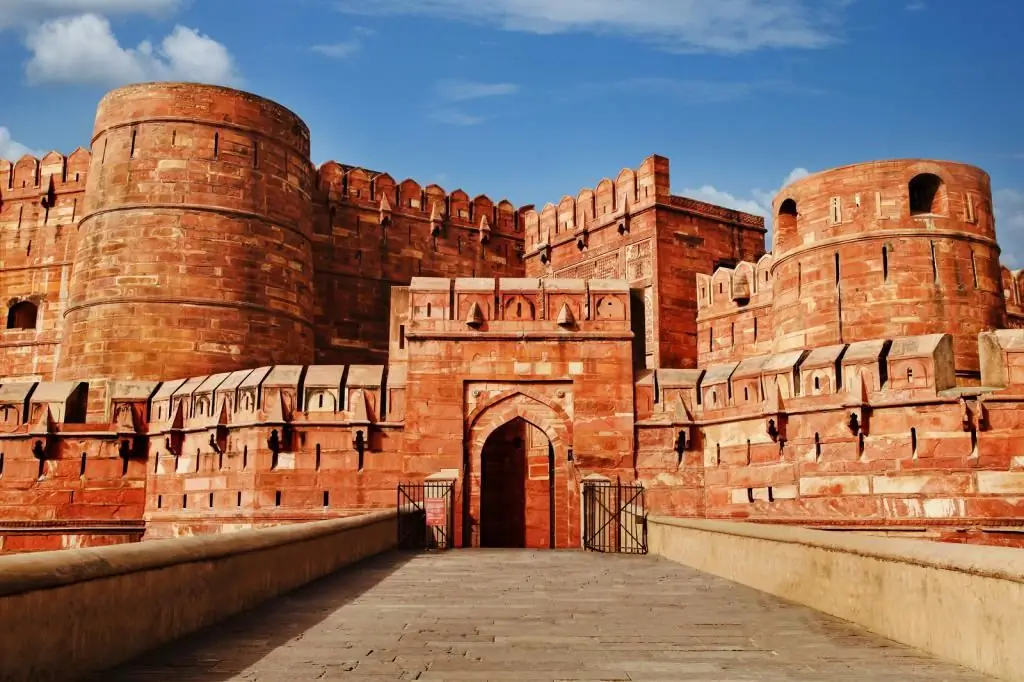Fort - what is it? As a rule, this word is associated with a military fortification. However, not everyone distinguishes it from a fortress, nevertheless, such a difference exists, since, in fact, the fort is part of the defensive structures that are part of the fortress or separated from it at some distance. More details about the fact that this is a fort will be described in the article.
Dictionary interpretation

First, let's see what is said about the term of interest to us in the explanatory dictionary. And also give examples of its use.
In front of "fort" in the dictionary there is a note "military term". It denotes either a small fortress or a fortification, which is part of the system of fortifications and belongs to the long-term type.
Example 1: “In the letters of the historian S. D. Sheremetev to the lawyer K. P. Pobedonostsev, written in 1877, there are lines that four forts were taken at once in one of the battles with the Turks, but they so desperately resisted that one redoubt was won back, and the main fortifications were kept in theirhands.”
Example 2: “Waclav Michalski’s 2008 book Temple of Concord tells about the Tunisian rectangular fort Jebel Kebir, carved into the rocks and having such features as impregnable casemates with small windows and cast iron bars, a deep moat, wild stone walls, a huge courtyard.”
For a better understanding that this is a fort, consider the synonyms and the origin of the word being studied.
Synonyms
Among them are:
- structure;
- strengthening;
- fortress;
- ravelin;
- redoubt;
- bastion;
- trench;
- citadel;
- fortress;
- fortecia;
- fortification;
- lunette;
- scarp;
- counterscarp.
Etymology
According to etymologists, the word "fort" has its roots in the Latin language. There is an adjective fortis, meaning "strong, hard, strong." From him in such European languages as German, English and French, the noun fort was formed, meaning a fortress, a stronghold. Some researchers believe that it came to Russian from German, while others believe that it was borrowed from French.
General concept

In the 17-18 centuries, forts were originally called separate fortifications, consisting only of a military garrison and protecting individual objects, for example, bridges, roads.
Later they were erected as separate fortifications,located in front of the fortress fence. And then in the 19th - early 20th centuries they became an integral part of a fort fortress or a field fortified position.
There were forts of both open and closed type. The first were of various configurations and an area of about five hectares. They were adapted for all-round defense. An earthen rampart was erected along the perimeter, covered with ditches or other obstacles. About 20-50 artillery pieces were located behind the rampart.
The second ones were built from stone, concrete or armored structures, as well as from other materials. At the beginning of the 18th century, they were multi-tiered stone towers equipped with many guns.
Fort Defense
This is the name of one of the popular computer games, which, like many others, is based on battles. This is a flash game, the essence of which is as follows. The player acts as a soldier who defends his fort.
He is constantly attacked by an opponent who must be met in a dignified manner. For this there is a special weapon. For each day of protecting a personal fort, money is credited, which can be used to buy new weapons that are more powerful. To win the game, you must hold the fort for 19 days.
Fort Knox

This is one of the US military bases (in English Fort Knox), located in the military town of the same name in Kentucky. It covers an area of 440 sq. km. Fort Knox is famous for its gold reserves. It is one of the most protected in the world. Histhe granite walls are covered with a layer of concrete, and the front door weighs 22 tons.






